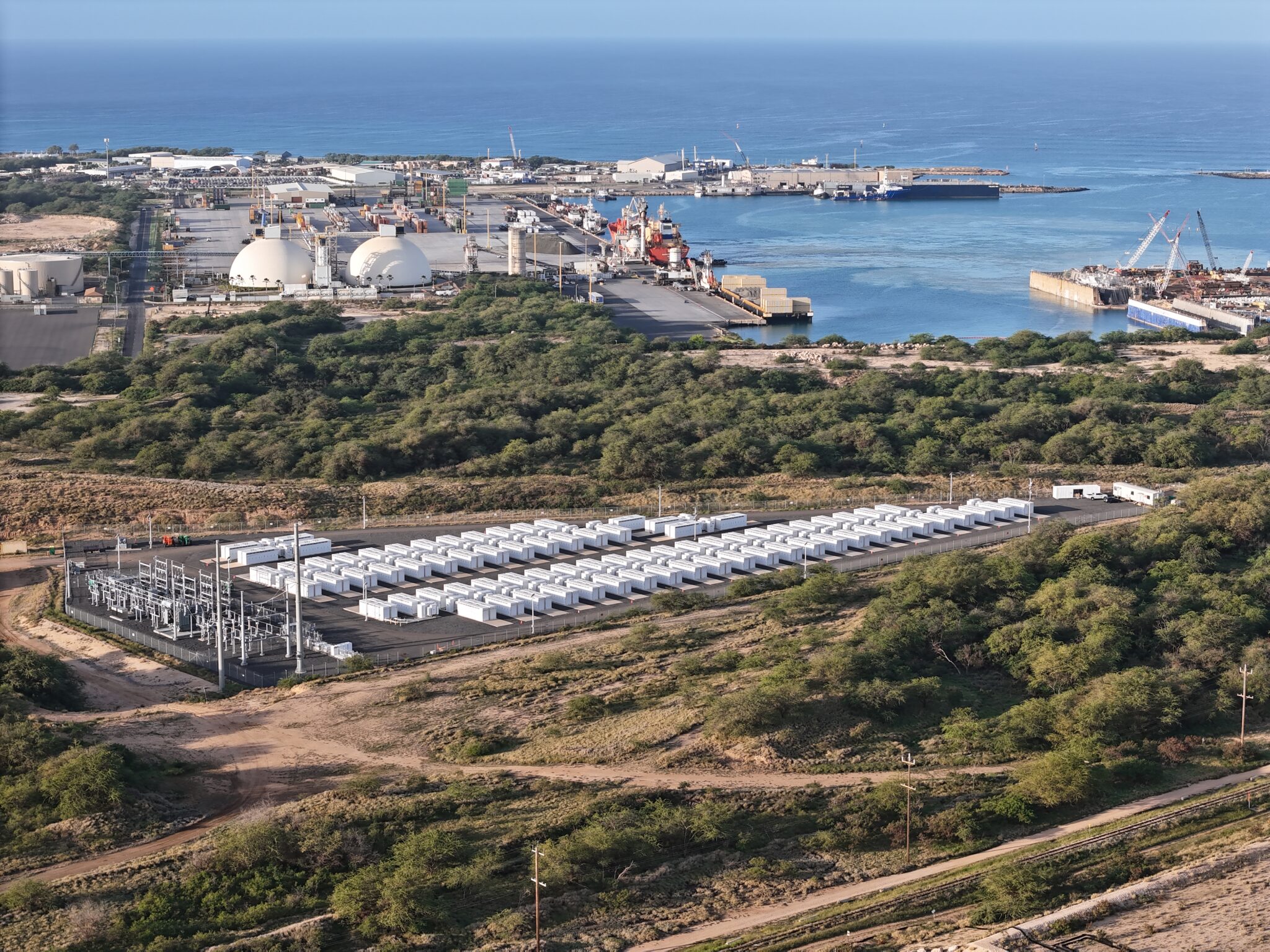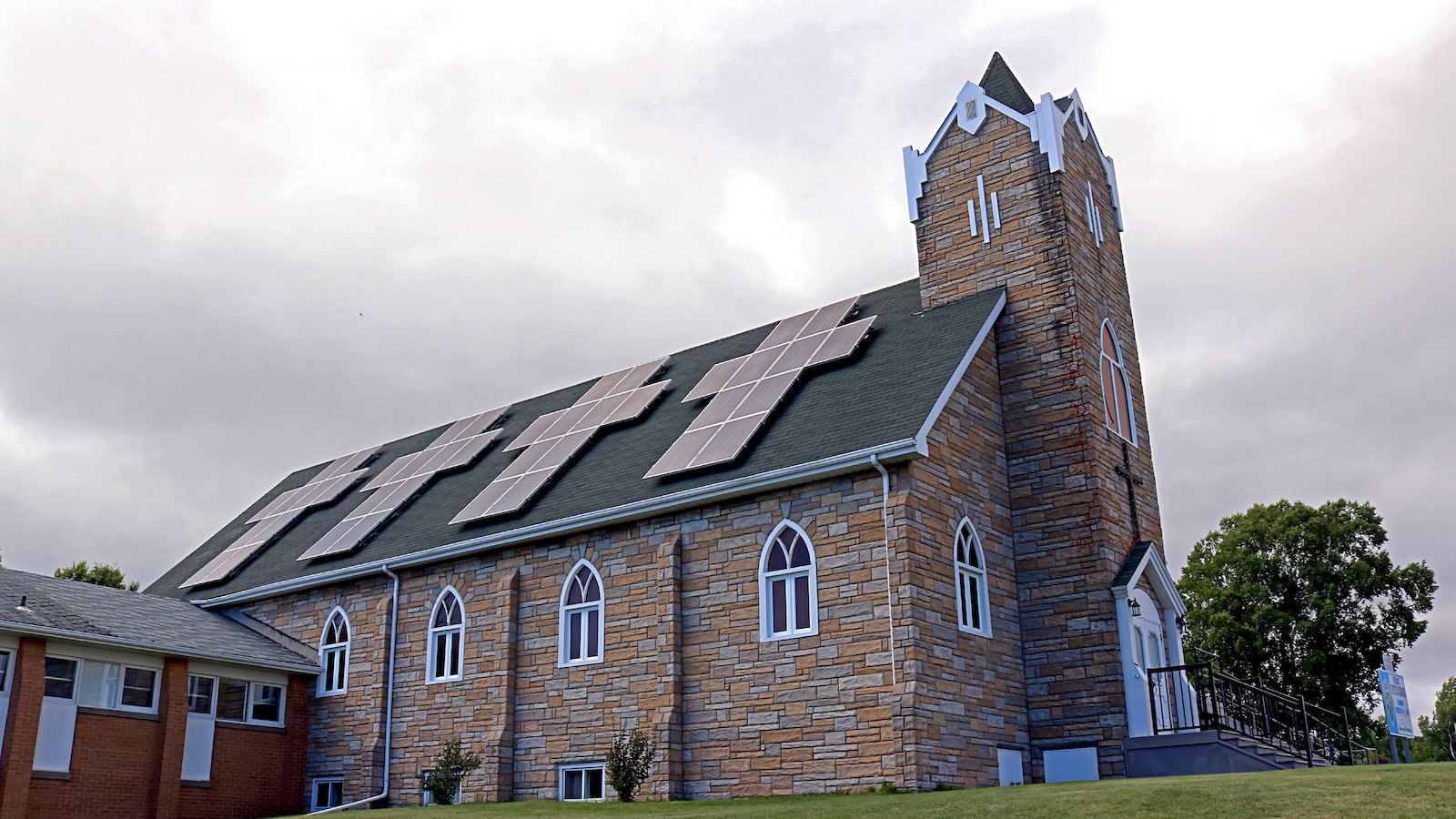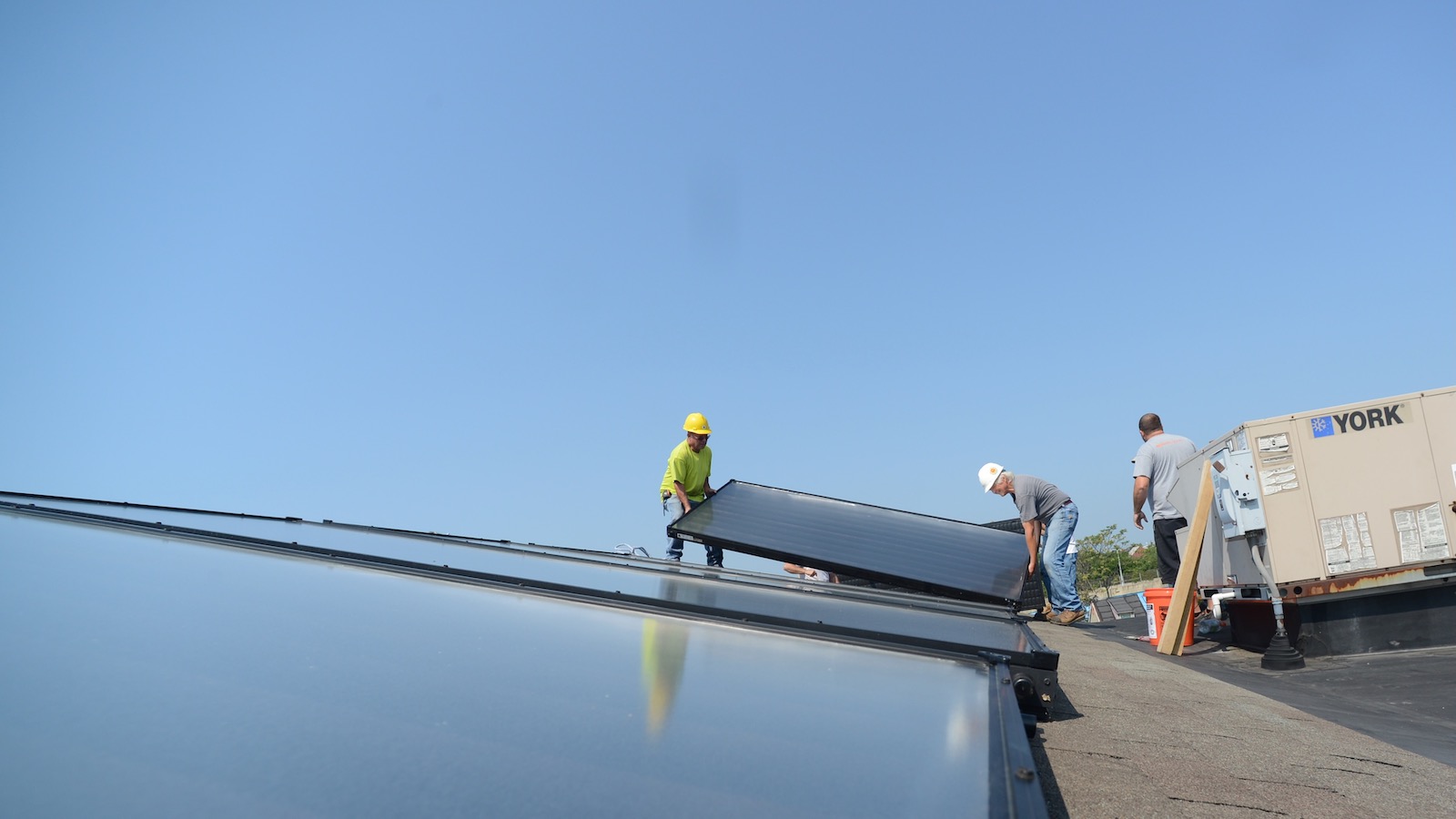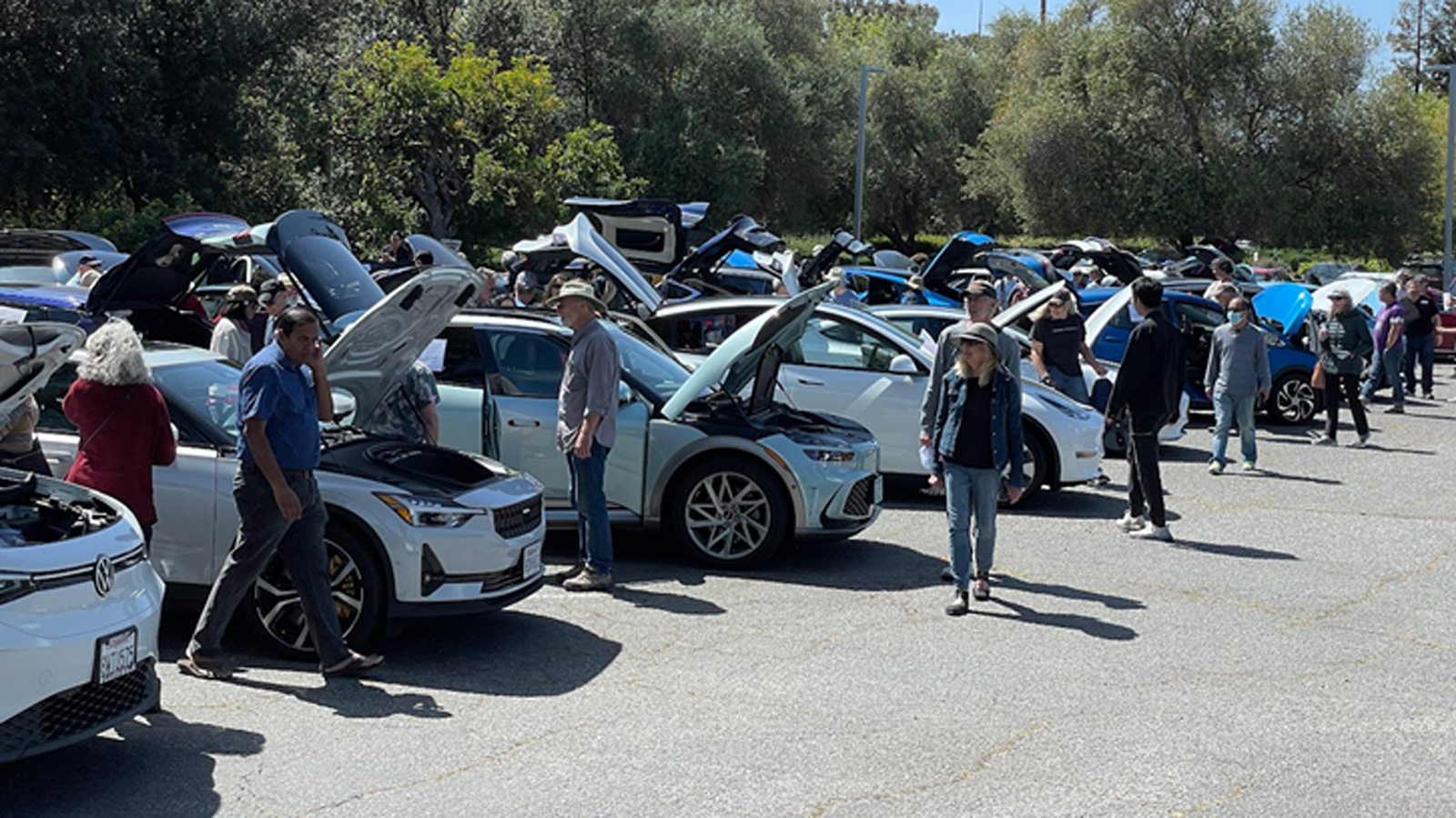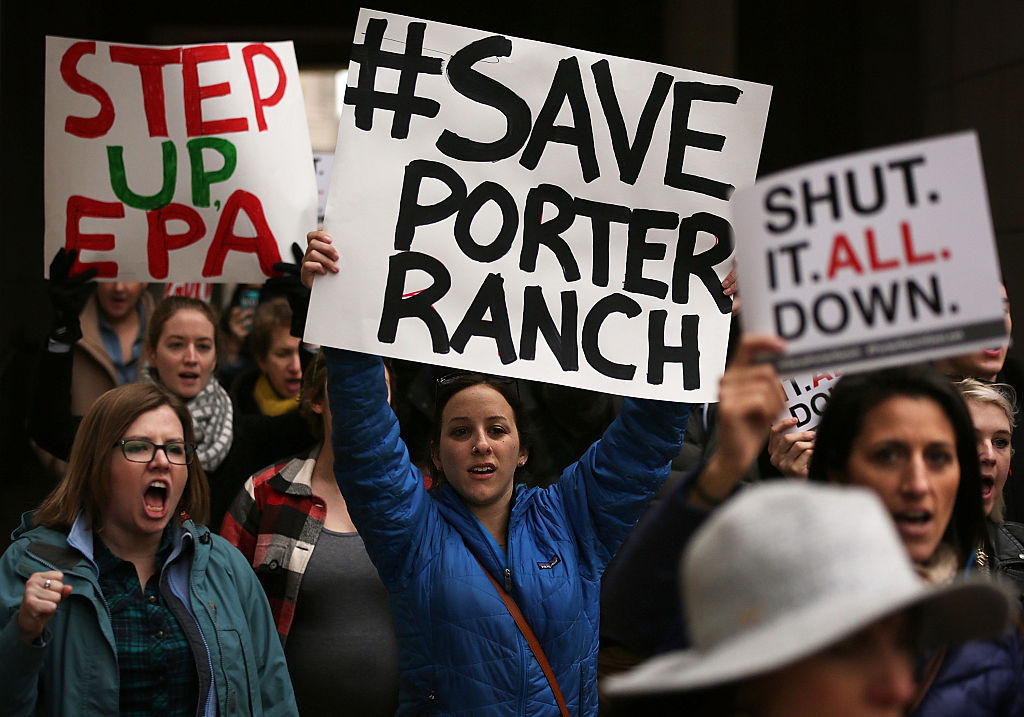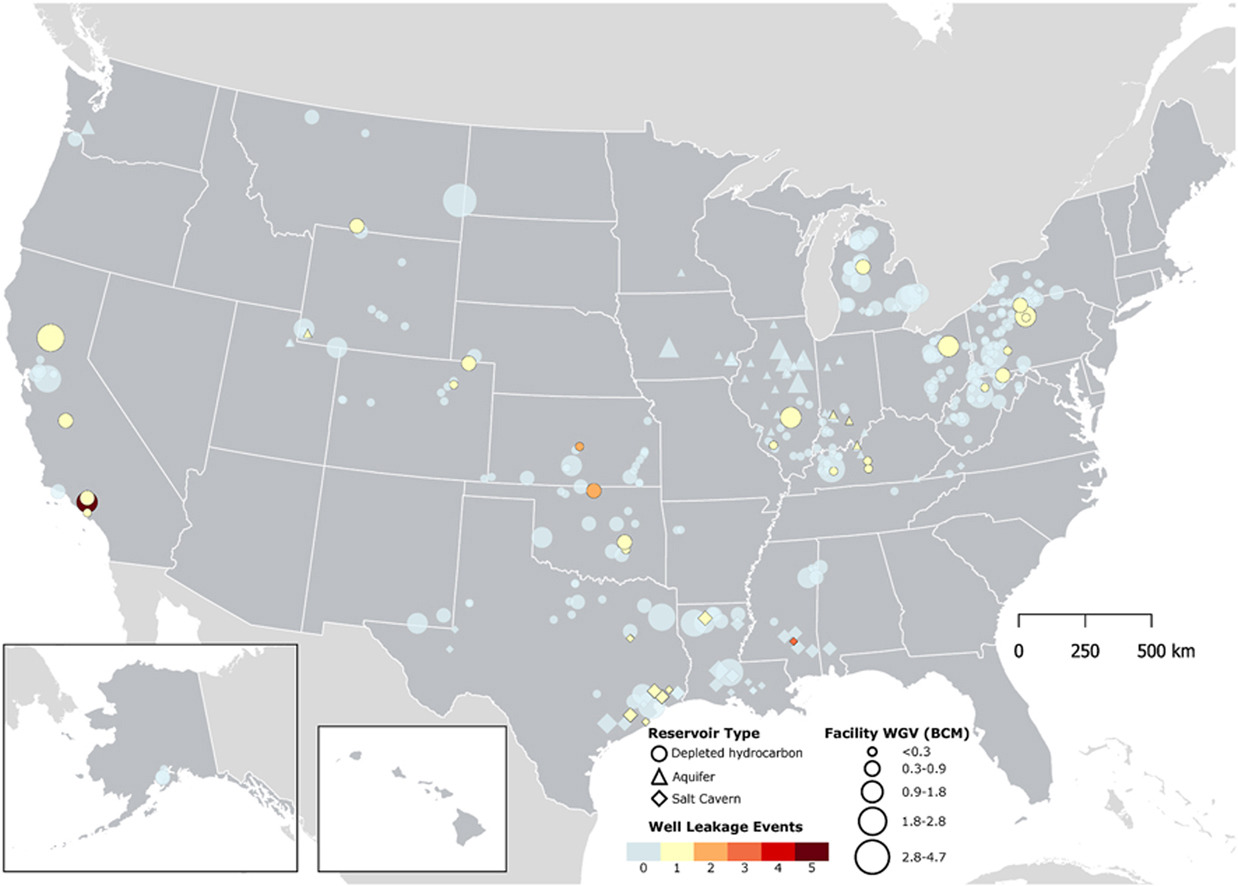This story was originally published by Capital & Main.
Alert visitors flying into Honolulu’s international airport might spot row after row of suburban rooftops covered with twinkling solar panels. Once they disembark, they can hail an electric vehicle plied by an Uber driver. Traversing the town’s west side, they can ogle the elevated Skyline, Hawaiʻi’s controversial electric-powered light rail.
It marks a sharp contrast to what they can see to the southeast: tankers floating in azure waters that deliver more than a billion gallons of crude oil annually at an offshore terminal.
This island — like so many others in the Pacific Ocean — is on the front lines of climate change. But unlike most others, it is carving out a place at the vanguard of a renewable energy revolution by leading the decarbonization of what has long been the most oil-dependent U.S. state.
In 2015, state legislators became the first in the nation to require electric utilities to generate power almost entirely from renewable energy and to mandate that the economy make enormous progress in leaving carbon-based fuels behind — both by 2045. That was a tall order in a state that has historically produced the lion’s share of its electricity from oil and coal, in addition to its heavy consumption of gasoline and airplane fuel.
Today, Hawaiʻi leads the nation in the amount of rooftop solar installed per person, far ahead of second and third place states, Massachusetts and California. The archipelago is on track to hit a 2030 milestone by generating 40 percent of its electricity from renewables — a stark contrast from 20 years earlier, when about 90 percent came from burning petroleum and even more polluting coal. The state ranks third for the highest level of electric vehicle adoption, behind California and Washington. Hawaiʻi also shuttered its last remaining coal plant in 2022.
“Rooftop solar is our number one success story,” said Issac Moriwake, managing attorney for Earthjustice’s Mid-Pacific regional office. “It jumpstarted our renewable energy growth and also captured the public’s imagination” of what’s possible.
Yet as it approaches the 10-year anniversary of the first of its pioneering climate laws, which requires utilities to produce virtually all of their power from renewables by 2045, the nation’s fiftieth state faces an energy reckoning that requires tough tradeoffs as it works toward its carbon-free goal.
An April report commissioned by the islands’ largest utility, Hawaiian Electric, warned that reaching an interim target of slashing fossil-fuel emissions in half across the state by 2030 will be challenging because gas-powered vehicles and machinery won’t suddenly disappear. Long-term investments will take years to pay off, allowing older equipment to keep polluting. And despite ongoing research on how to best electrify air travel, its infrastructure is all but certain to be based on petroleum products for the foreseeable future.
Former Governor David Ige, an engineer who helped shepherd the state’s groundbreaking clean energy goals, said during a climate conference in Honolulu on an unseasonably warm October day, “We became the first state to commit to a carbon negative future — it’s about transforming our energy systems throughout our communities, and we’ve made tremendous strides to meet those goals. Now we need to step on the gas, big time.”
Bumps in the road
Despite Hawaiʻi’s progress, petroleum still accounts for 80 percent of all energy consumed by the state’s 1.4 million residents — largely split three ways between electricity, gasoline for vehicles, and jet fuel. And while electric vehicle sales continue to increase, the gas-guzzling Toyota Tacoma remains the islands’ best-selling car — more than 20 years and running.
“We’ve made progress on the electric side, but we are not making progress overall,” added Earthjustice’s Moriwake of Hawaiʻi’s transition. “We are not going to get to our overall decarbonization goals unless we confront the transportation sector head on.”
Moriwake and Our Children’s Trust, a nonprofit public interest law firm, filed a lawsuit in 2022 on behalf of 14 children and teenagers against the state, claiming its transportation department prioritizes highway construction that fuels oil consumption and increases pollution that warms the planet. The case, among several youth-led climate lawsuits pending across North America, is scheduled for trial this summer.
Hawaiʻi’s greenhouse gas emissions are indeed headed in the wrong direction, with per capita amounts higher than those of 85 percent of countries on Earth, attorneys wrote in the 2022 complaint. The state’s energy sector — which includes electricity production and transportation — accounted for about 88 percent of these emissions.
As the lawsuit plays out in the court system, energy providers are experimenting with how to decarbonize the islands’ aviation system — a vast and complicated problem that lacks substitute fuel options, environmental consultants noted in the Hawaiian Electric report. This question is pivotal as Hawaiʻi’s economy is driven by tourism fueled by air travel.
The state’s largest air carrier, Hawaiian Airlines, and its refinery, Par Hawaiʻi LLC, partnered to study the commercial viability of “locally produced sustainable aviation fuels — to replace all or a percentage of traditional kerosene-based jet fuel.”
Jet fuel makes up a larger share of the state’s consumption — about two-fifths of all petroleum products — than of any other except Alaska, federal statistics show.
For millions of tourists landing at Oʻahu’s Daniel K. Inouye International Airport each year, taking an airplane is the only feasible way to reach the island — although not at all the cleanest.
Renewable energy and the promise of cheaper electricity?
Electricity costs for Hawaiʻi, the Earth’s most geographically isolated population center, with access to few traditional energy resources, have long been three times higher than the U.S. mainland average. Policymakers hoped that lower-cost production from wind and solar would bend that curve — a theory that has yet to become reality. In fact, costs have come down markedly for those who can afford solar panels, but they remain stubbornly high for the much larger number of residents without their own clean energy options.
In the state that already had the highest cost of living, escalating oil prices driven by the early stages of the war in Ukraine — which forced Hawaiʻi to find other suppliers — contributed to about 8 percent of the islands’ consumer inflation, compared to 6.9 percent on the mainland, according to Hawaiʻi Chief State Economist Eugene Tian. Rising oil prices translate into a tax on almost everything since nearly all goods in Hawaiʻi must be transported here.
The state’s transportation and oil premium should, at least theoretically, have been favorable to the shift toward renewable energy because solar panels and other sources of renewable energy infrastructure became financially competitive sooner than in other states with lower power costs. But amid the many high-stakes investments in the state’s renewable energy revolution, electricity prices have not yet come down for most residents, and no one is sure when they will.
The state’s electric utility says what customers don’t see — yet — is the ability of renewables to even out unpredictable swings in petroleum prices due to demand surges from military conflicts, speculators or refinery outages.
The push to decarbonize island power grids by “adding large-scale renewable generation and energy storage will help keep costs stable; no more peaks and valleys tied to fluctuations in oil prices,” said Darren Pai, Hawaiian Electric’s manager of external communication. “In the long term, we know rates will be much less than they would be if we stayed on oil.”
The Maui fires and climate-changed islands
The United States’ deadliest wildfire in over a century leveled the historic town of Lahaina on Maui in mere hours in August, stunning the nation and killing 100 people. Record temperatures, tinder dry vegetation and reduced rainfall contributed to the blaze. While investigations continue, the County of Maui filed a lawsuit saying the utility failed to shut off electricity from its suspended power lines quickly enough. The electric utility has said that an earlier fire was triggered when its power lines fell in high winds, but denied responsibility for the fire that destroyed Lahaina. But the company’s stock valuation cratered last summer, and has been slow to recover.
As weather catastrophes attributed to climate change multiply, the islands’ clean energy transition is at a crossroads.
On Oʻahu, the Hawaiian archipelago’s tourist hub, waves often cover Waikiki Beach at high tide and slap up against sea walls bordering hotel restaurants, spraying diners. In all, the authors of a report to the Hawaiʻi Legislature on sea-level rise predict that global warming will cause seas around the islands to rise by up to 8 feet by 2100, putting tens of thousands of households in the path of tidal flooding.
Meanwhile, the window is narrowing to cut greenhouse gas emissions enough to keep temperature rise below the 1.5 degree Celsius threshold, beyond which many international scientists say droughts, floods, and wildfires will become substantially more frequent and extreme. Scientists who focus on slowing global warming caution that models show urgent emissions cuts are necessary to both curb temperature rise and save many islands.
Climate change is at the root of the Lahaina wildfire, according to Charles Fletcher, interim dean of the School of Ocean and Earth Science and Technology at the University of Hawaiʻi at Manoa.
Computer models show that to keep overall temperature rise below 1.5 Celsius (2.7 Fahrenheit), greenhouse gas emissions must be cut by 45 percent (from 2010 levels) by 2030, Fletcher said, adding that the trend is moving in the opposite direction. Figures compiled by the United Nations from national climate action plans show that global emissions are forecast to increase over the next seven years by 9 percent.
During a presentation at the October climate conference, Fletcher said, “This decade is a pivotal decade.”
Who benefits from the islands’ solar boon?
Hawaiʻi’s shift toward renewables is unevenly distributed. In 2022, Oʻahu and Maui — which are collectively home to four in five residents in the state — produced 28 percent and 36 percent, respectively, of their power from renewables. The less-populated but heavily touristed island of Kauai, however, generates 60 percent of its electricity from renewables, and at lower costs, thanks to widely distributed utility-scale projects.
The solar industry also proved to be a rare economic bright spot for the state during the economic tumult of recent years. Honolulu Mayor Rick Blangiardi recounted how the clean energy revolution buttressed construction in the city during the COVID downturn, when tourism essentially ceased.
“Sixty percent … of the 17,000 [development] applications we were receiving for permits came from the solar industry,” said Blangiardi at an October 19 solar conference at a Honolulu park as the setting sun cast purple, orange, and red light over the Pacific Ocean.
The first-term mayor added that a new policy enacted by his office in late October aims to help speed the transition by making it easier for companies to obtain permits to install solar panels on multifamily buildings and condo complexes on Oʻahu.
Meanwhile, solar providers — who pushed for the change — are having a tough time finding new spaces on which to install utility-scale systems around the islands in a state with some of the country’s most complex land-use laws.
Even as leaders on the island of Oʻahu seek to help the solar industry expand its reach, many of the state’s residents cannot afford to install a rooftop system while renters aren’t allowed to take the initiative. Almost 40 percent of households are renters and are at risk of being left behind by the solar revolution when there is no utility-scale effort powering their homes.
And economists here agree that those with panels enjoy lower electricity costs, even as they tend to drive up such prices for those who remain reliant on the fossil fuel-powered grid, because fewer customers are covering the costs associated with the power grid’s core infrastructure.
“Anyone who has rooftop solar has a pretty sweet deal — I have a guilty conscience for it myself,” said Michael Roberts, an economics professor at the University of Hawaiʻi Manoa, in an interview. “I pay an effective electricity price that is a third of what other people pay.”
The Legislature has sought to make the clean energy revolution more equitable by creating the Hawaiʻi Green Infrastructure Authority a decade ago and capitalizing its loan fund with the proceeds of a $150 million bond. The body’s mission is to help the 44 percent of state residents who struggle to afford basic expenses so that they are able to afford a solar system.
The “Green Bank” targets low- and moderate-income households and nonprofits, and doesn’t require a credit score to qualify for a loan. The amount borrowers repay via their monthly bill is based on estimated utility bill savings.
The program allows renters to benefit from solar because the costs of a sun-powered system are tied to the electrical meter at their home, and thus an individual renter’s bill, and can be transferred from tenant to tenant when residents move. Its benefits could bring tremendous savings to residents because electricity costs from solar are lower than rates paid by residents who rely on fossil fuels, said Gwen Yamamoto Lau, the authority’s executive director.
In one case, a low-income family’s monthly energy bill averaged $610. After the bank-financed installation of a solar and battery system, the bill dropped to $460 a month — leading to a projected savings, over the two-decade life of the system, of $39,342.
Electrification of buildings and transportation stalls
Perhaps the biggest challenge, experts note, is Hawaiʻi’s electrification of other sectors, like transportation and commercial and industrial buildings. That effort is behind schedule and could stymie the state’s ability to meet a commitment to halve greenhouse gas emissions from 2005 levels by 2030.
Then there is Hawaiʻi’s outsize dependence on aviation, ground, marine, and military transportation that generates almost half of the islands’ emissions, compared to 28 percent for the rest of the U.S., according to Hawaiian Electric’s report from April.
The lion’s share of the islands’ petroleum use is in its transportation sector. Most residents who commute still drive alone to work — in a gas-powered car. But for those who drive an electric vehicle, there are also frustrations. Uber drivers who rely on an electric vehicle readily note the lack of fast-charging ports that cut into their income as they wait in line to use a charger for hours. This doesn’t count the time it takes to charge — which can be an additional hour or two, depending on charger speed.
There are about 19,500 registered electric vehicles in Hawaiʻi and about 800 public charging stations. Industry analysts estimate that the car-to-charger sweet spot is about one station for every eight to 12 vehicles. Hawaii’s current ratio is about one for every 24.
As the number of electric cars on the road outpaces the number of available charging stations, the state is widening lanes, making it easier for more cars to be on the road, said Moriwake, the Earthjustice attorney who filed the lawsuit on behalf of Hawaiʻi’s youth.
“The state’s Department of Transportation has the Kuleana” — Hawaiian for responsibility — ”to build and maintain a system that is decarbonized, according to the law, and the Supreme Court made clear this is a constitutional right,” Moriwake said.
In a September 2022 reply to the filing, legal counsel for the Hawaiʻi Department of Transportation argued that the agency is complying with clean energy laws by “weighing the options, timing, costs and benefits of a wide range of responses to climate change.”
Meanwhile, state legislators argued that transitioning from an oil-based economy to one powered by clean energy is urgent, both because of the worsening risks from climate change and security issues that arise from transporting petroleum from far-flung and sometimes unstable countries in the Middle East and Africa.
While fossil fuel prices are volatile and hard to predict, the cost of solar panels has reliably fallen over time, said Hawai’i state Senator Chris Lee, at the Honolulu climate conference. Federal research shows that the cost of a 22-panel residential system fell by 75 percent between 2010 and 2020.
“We are in a precarious, risky situation right now — our future is not in our control,” he said.
“Fuel supplies come from nations far and wide, and the anxiety from this keeps us up at night,” added Lee, who worked on the state’s groundbreaking clean energy laws. “We need to take the future back into our hands.”
This story was originally published by Grist with the headline The promise and the perils of Hawaiʻi’s renewable energy revolution on Feb 4, 2024.

